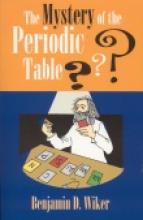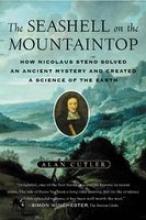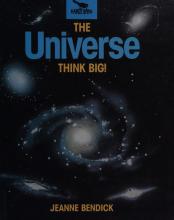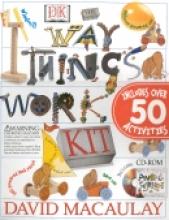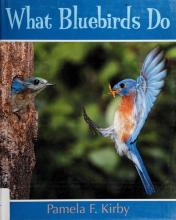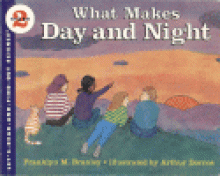Science
The Mystery of the Periodic Table
This new title from Bethlehem Books follows the tradition of Jeanne Bendick with her books on Archimedes and Galen by making scientific concepts accessible to ordinary people.
Dr. Wiker is a prolific author of articles on matters relating to science and the faith. He has taught at Thomas Aquinas College and Franciscan University of Steubenville.
Wiker takes us all the way back to the Neolithic era to begin his story of mankind's fascination with metals that started the development of the science of Chemistry. The various scientific characters that play a role in this story - from ancient Greek atomists to brilliant modern scholars - are interesting in and of themselves. We learn of the diligent John Dalton (1766-1844) who kept a daily journal called "Observations on the Weather" for 57 years; the daring and foolhardy Humphry Davy (1778-1829), who discovered laughing gas and a whole slew of elements, and Dimitrii Mendeleev (d. 1907) who discovered the order of the elements by 'playing cards.' A great deal of scientific content that led to the development of the Periodic Table is presented in these middle chapters. The content is made particularly accessible through Wiker's humorous, engaging style and the connections he makes between each scientist's interest in a particular subject and what that meant to scientific progress. He also has fun pointing out the errors scientists made that ironically caused some of the very greatest leaps in scientific knowledge.
The last three chapters can be a little harder to follow and students will benefit from working through them slowly and carefully studying the numerous diagrams. The publisher recommends that, although the book is generally accessible to ages 10 and up, these later chapters might be more understandable to slightly older children. I found that drawing up additional diagrams of my own helped me to follow the text better (particularly diagrams of the structures of the electron "shells"). Diligence in studying these last few chapters really pays off, though, as the final discoveries about the Periodic Table and the well-ordered nature of the relationships between the elements are absolutely fascinating.
Now, you might be asking yourself "Why would someone who teaches at Catholic colleges and writes for Catholic publications be so interested in the Periodic Table?" The answer is simple: The Periodic Table shows the relationships between the most basic elements that comprise everything on earth. It is phenomenal and mind-boggling how mathematically-ordered these elements are. This kind of order seen in nature is a powerful argument against random and chaotic theories of the origins of the world. I should also note that, although Dr. Wiker's interest in this topic is likely related to his faith, he never directly brings up the topic in his book. I'm really glad that he didn't. There's a time for laying it all on the table and a time for a little more subtlety. This sort of book allows readers to discover some of the "Wow!" of Science and later, gradually make the connection between the order of the elements and the awesomeness of the Creator who designed it all.
Highly and enthusiastically recommended! Probably the most fun I've ever had reading a science book. :)
The Salamander Room
The Seashell on the Mountaintop
The Story of Science
Hakim's The Story of Science is an attractive but frustrating piece. Her comprehensive portrayal of the history of physics is extensively researched and beautifully illustrated, but marred by a steady stream of errors of science and history and an irritating political and philosophical drumbeat about things like population control and the proper separation (only now known to man) between religion and science.
The history of science is ambitious topic, requiring both an insight into science and a knowledge of history. It was perhaps wise to exclude almost completely the life sciences – biology, medicine, anthropology, and paleontology -- as well as the earth sciences of geology and meteorology. No controversy about Darwin here! Nevertheless, having made that decision, it might have been well to rename the book, indicating that it would be primarily "the story of physics", with substantial segments on chemistry and astronomy (which could hardly be left out of the history of physics) and no more than a passing mention of other topics.
It would be still clearer to say that Hakim is here presenting the stories of the physicists, in chronological order, with brief and mostly modern explanations of the insights they were working through. This is enough subject matter to be very challenging, very interesting, and certainly more useful than long explanations of old and erroneous ideas. We see the faces of the physicists, their equipment, and the geography of their homes and travels. Sidebars on the scientific or mathematical principles they were investigating are mostly well done but make it difficult to sort out what was actually known at a particular time, and are so numerous as to distract from the flow of her present-tense narrative.
Hakim's errors of science range from minor failures of clarity and information to real confusions indicating that she does not understand her material. The book cannot be used as a stand-alone science course; it must be checked.
- In a minor misstatement, she reports (p. 51) that Tycho Brahe "guesses that the stars are at least 700 times further than Saturn. He is wrong about that; the nearest star is more than 20,000 times farther…" Well, if his guess was "at least," he was right of course. What is important here is to note what a stretch was required of the 17th century imagination. The difficulty of accepting a sun-centered cosmos was not just traditionalism, but the radical expansion of our imagination regarding knowable space.
- More problematic is her boxed discussion of Tycho's supernova. First, (p 50 blue print in the green box) she says that "[I]n a split second, a massive star runs out of fuel… gravity collapses the core." Well, the collapse is sudden, and it happens after the star runs out of fuel, but the running out of fuel is not particularly abrupt, and it is the cooling after that depletion that brings about sudden collapse. And actually, Tycho's supernova worked a little differently, because it was not a core-collapse supernova. So it gets worse…
- (In the same box, black print,) Hakim says that "a supernova explosion destroys the original star. A nova explosion happens on the surface of a white dwarf…" On page 51, (still in the green box), she offers an image of "what's left of Tycho's 1572 supernova… There's no trace of a stellar core which suggests that the original star was a white dwarf in a binary system rather than a red giant. If a core does survive, it can become a neutron star or a black hole." So does a supernova destroy a star, or can it leave a core? And was this a nova – as suggested by the mention of its being a white dwarf -- or a supernova? An attentive student must run through several sources to find the answers. An ordinary reader may shrug – astronomy is too difficult for me!
- On page 85, there is a discussion of Galilean relativity. This is an unusual term, likely to confuse her readers as it certainly confused Hakim herself. She states that Galileo merely reported the visual difference between the appearance of a vertical path when a ball dropped from a mast and viewed by the moving ship's passengers -- and the curved appearance of the same ball's path as viewed from shore against a stationary background such as quiet clouds – my addition; there should be clouds in the picture – or something clearly stationary. Hakim says that "Albert Einstein, in the twentieth century, will help with the explaining." We don't need Einstein for this one; Newton works. A cloud will do it, and an artist who knows what he is illustrating. Einstein's topic was far more subtle.
- Hakim reports (p. 289) that "Hydrogen molecules (H2 with only two protons and electrons) are small and light. Most other molecules are heavier." Well, if molecules are composed of two or more atoms, all other molecules are heavier; this is her definition in two places. But, without commenting on the discrepancy, she alternates this with a definition which allows for single atoms -- such as those of the noble gases and the metals of coinage -- to be considered molecules. This is very confusing, and one wonders what she herself intended to convey.
- In discussing Avogadro's insight into gases, Hakim reports that: "His idea only makes sense if the particles in a gas are far apart, with space between them (which is the case – even for liquids and solids.)" No, no! This is only about gases. Adding the liquids and solids means Hakim didn't get the picture. Will her readers? (also p. 289)
- Hakim says, "An ellipse is not just any old oval; it has a precise curve." It would be best to say nothing about ovals, which are wider at one end, like an egg, but which do have a "precise" mathematical definition. (While the two foci of an ellipse are points, an oval has a circle at one focus.) Comparing the mathematical and astronomical term "ellipse" with the colloquial (not mathematical) term oval is too bad. (p. 358) Besides, she discussed the drawing of ellipses on pages 129-131. Since this is a history of sorts, it would have made sense to mention in this drawing lesson that the conic section was from Apollonius of Perga in 200 B.C. and the pin drawing was James Clerk Maxwell's idea in 1845.
- Hakim reports that metals "mostly have high melting and boiling points (except for mercury, which is the only metal that is liquid at room temperature) ." Yes, well, mercury has a very low melting point, but gallium melts in your hand, so that's a pretty low melting point too. (p. 296)
As I said, a range of errors of many types.
Her sense of history as a setting for the story of science is worse.
The first two paragraphs in the first chapter takes us right to the heart of the matter – the first one is about population growth leading to deforestation, starting in the Middle Ages. The next is a rather poorly considered piece on St. Joan of Arc, not a personality who needed to be included – rather carelessly -- in a history of science, merely to provide some color for the years before 1453, Hakim's starting date for this volume. As is often the case throughout this work, this loaded "setting" story is simply off-topic.
Continuing the topic of deforestation, we find, on pages 2-3, a full spread with images and text explaining how deforestation began in the Middle Ages, and continues with the destruction of the rainforest. "Big question: Will the forests continue to be threatened by population growth?"
This gratuitous tree politics with its eugenic bias raises all sorts of political and philosophical questions, not to mention that the very progress she lauds really depended on the plow because you can't do science until farming gets easy enough to leave time for other things. Anyway, a book in which the Big question is overpopulation is opposed to the Catholic attitude towards the miracle of human life. Big red flag right there on page 2, and it goes on.
Of course most of the history errors are the usual ones having to do with the stupid old middle ages, the foot-dragging Church, and the wonderful Greek and modern thinkers.
For example, Copernicus (p. 31) is about to make discoveries that "will challenge everyone's ideas about the heavens and the Earth," says Hakim, winding up to his sun-centered universe. But when we get there, we find (p. 38) that Aristarchus has been there. So now are we to suppose that Copernicus was the first guy to read Aristarchus since 200 B.C.? Nor is she correct in asserting that "the Aristotle/Ptolemy model has worked well enough for centuries." It was precisely because it didn't work well enough that Copernicus was asked to correct it. Of course it is only too well known that some people were irritated by the work of Copernicus, but by no means "everyone", for the Church which requested Copernicus' research set about using his work and had the new calendar in 40 years.
In philosophy, Hakim shows the colors of her consultants when she states (p. 19) that "The act of observing the [subatomic] particles changes their behavior." This is part of the thinking of many, but by no means all 20th century physicists, not of Einstein for example. Philosophically, it is called positivism; it is going out of favor, and it has arguably hobbled physics for half a century. In any case, it is not an established scientific fact, and it is opposed to Catholic philosophy, for it leads directly to the question whether anything can be known at all, as she puts it: "Is there really any certainty in science?"
Then, at the end of her book, Hakim raises the question why the western world has been the leader in scientific thought. Her answer, admittedly personal, is that we have the Greek heritage of freedom plus the Renaissance insight of tying mathematics to physics. Perhaps she does not even know that Father Stanley Jaki (20th century physicist and theologian with a specialization in the history of science) has argued for a very different answer – a conviction of order that only came with Christianity. This is not the place to argue with her, but only to say that she hasn't read the basic alternative arguments, (either Jaki or the more accessible Thomas Woods) on this topic and her answer is merely an uninformed and irritating opinion, oblivious of the Catholic contribution, and not seriously related to the actual history of science.
One last complaint would be hilarious if it were not meant seriously. On page 97, Hakim is talking about the end of our sun and wondering where we'll be when it goes: – "maybe in another solar system or another galaxy or another universe."
Hmmm. Another solar system is not such an easy matter.
Another galaxy? Clueless. As ignorant of the meaning of distance as Brahe was about the distance to the stars.
Another universe? Such words seemed to have a meaning when we thought other galaxies were other universes; now they are just noise. It's heaven or nothing, folks.
The Universe: Think Big!
Jeanne Bendick, author of Archimedes and the Door of Science, explains some basic concepts regarding the universe in a surprisingly simple way (approximately 2nd grade reading level - short pages with large type). First she invites children to try to imagine how big the universe is (in terms of it being much, much bigger than other, more familiar things). The bulk of the book focuses on large distances and how they're measured and how people used to believe that the earth was at the center of the universe and remained motionless. The final page explains the big bang theory. For a controversial topic it is explained rather nice in terms of "How did the Universe begin? Nobody knows for sure, but here is what most scientists of today think." Although the big bang theory was first thought of by a Catholic priest (LeMaitre) who was trying to point toward something which God created, we all know that the big bang theory is often used to try to explain God away. Young children don't have much trouble with this when presented as it is in this book. After the book says "Suddenly, this object exploded with a big bang," you can ask your children, "If this is the way the Universe really did begin, then who made the explosion happen?" Chances are, they'll know the answer. :)
The Way Things Work Kit
This kit provides dozens of special cardboard pieces, wooden dowels string, wheels, etc. for making simple machines (inclined planes, scales, etc.) that can be used for understanding basic concepts of mechanics - how things work. Based upon the bestselling "The Way Things Work" by David Macaulay, the kit continues the theme of Wooly Mammoths as props and characters for use in these experiments. (Included in the kit are two cardboard Wooly Mammoths to which you affix a certain number of identical coins to provide a common weight for some of the experiments.) A thin, but colorful book (32 pages - glossy cover) takes you through the scientific explanations of the various principles involved in the experiments. 5 1/2 " x 8 1/2" glossy full color cards provide detailed step-by-step instructions (with the typical DK photos) for each experiment.
Although some of the experiments took a little more finesse than might have been expected (but understandable due to the limitations of the materials) and some of the instruction cards were a little hard to follow, overall we found this to be an exceptional value - a lot of bang for your buck at the $30 retail price. We found that a dozen or so ziploc bags were very helpful in keeping the various pieces straight and, with a little patience, all the pieces can be stored in the box.
The biggest hit in our family so far was the Pinball Science CD ROM which also came with the kit.  The game includes three pinball arenas each having a specific theme (village, island and moon). The science part involves answering questions in order to earn the right to place certain fixtures on each pinball game. Without the fixtures, scores are lower and players are unable to advance to the next level. With each question, the player has the option to "Research Answer". This feature takes the player to the appropriate page in an interesting, humorous and interactive log book which explains the functioning of various devices such as windmills, faucets, hot-air balloons, gears, and rockets. Some of the graphics are a little silly (Wooly Mammoths in bikinis on the island and such), but I didn't find anything really objectionable.
The game includes three pinball arenas each having a specific theme (village, island and moon). The science part involves answering questions in order to earn the right to place certain fixtures on each pinball game. Without the fixtures, scores are lower and players are unable to advance to the next level. With each question, the player has the option to "Research Answer". This feature takes the player to the appropriate page in an interesting, humorous and interactive log book which explains the functioning of various devices such as windmills, faucets, hot-air balloons, gears, and rockets. Some of the graphics are a little silly (Wooly Mammoths in bikinis on the island and such), but I didn't find anything really objectionable.
Trains
I really like it when authors of children's books remember that details of how things work are fascinating to children. Gail Gibbons is definitely one of those authors. Her book is filled with very simple illustrations and text about trains, but the various parts of the trains are labeled and the text explains things like how the trains link together and the differences between gondola cars, hopper cars, boxcars and tank cars.The back page contains a chart of signs and signals relating to trains. Appropriate for preschool or kindergarten age children.
What Bluebirds do
We picked a full bag of mostly new picture books from the library as we don't visit it as often as during the school year. Several new publications were examined by my review team – our children. Some were bold, creative, large and colorful. Fiction, informational, biographies: we read many different books over a number of days. In my mind as I hear their comments and listen or watch their reading enjoyment I run my own elimination process.
A simple, quiet, gentle book was the clear winner this time, beating all of its "louder" competitors: What Bluebirds Do, by Pamela Kirby. It won all of our hearts with the true photographic story of a pair of bluebirds in the backyard of the author's house. Beautiful photography, a list of resources, and a careful description of the bluebirds' life are combined into the most delightful nature-book we have come across in a while!
What Makes Day and Night?
The clearly written text is combined with simple, colorful pictures to make the concepts of day and night and the rotation of the earth in relation to the sun very understandable for both young children and their parents. : ) Included is a very simple hands-on "experiment" requiring only your child and a desk lamp. Some information about the moon is also covered. Like other books in this series, this book is a great solution for satisfying some of those "why" questions that young children constantly ask.
Copyrights 1962/1986

